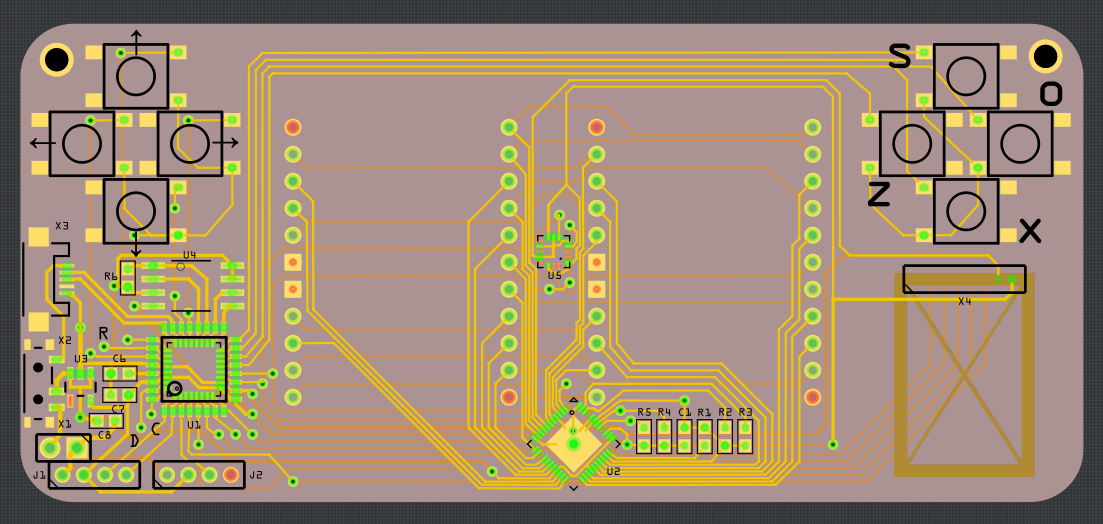I couldn't sleep this night, and that means I got to redo the PCB from the last log. I like it much better now:

There is a number of improvements and cool things about it:
- Most components (except for the display driver and accelerometer) are not covered by the display, so they can be easily inspected and debugged.
- The USB socket and the switch are now on the side, which means you can have the empty part of the badge either at the top or at the bottom.
- I got rid of the prototyping area (nobody would have a soldering iron at the conference anyways), and replaced it with two grove connectors — one for I²C and one for analog in/out.
- The accelerometer is in the center of the board, so you can easily calculate its orientation.
- I added a footprint for an NRF24L01 radio module. I am not yet sure what we will use for communication, but this module is common and cheap, and lets us provide a similar interface to what the "radio" module does on the micro:bit. This could be easily modified to instead have a wifi, bluetooth, lora, nfc or anything else — the pins used support both SPI and UART.
- The back of the board is still completely empty, and has plenty of room for the battery holder. Unfortunately I wasn't able to include mounting holes for the holder (they would be in the center, where the accelerometer and display driver are), so it will need to be glued with a double-sided tape.
- The display's LEDs are powered directly from the USB or battery, without voltage regulation — that should save some power. As a side effect, because USB will have higher voltage than the battery, the display will probably be a little bit brighter when connected.
- The switch switches between battery and USB power, so no diodes or mosfets necessaery for backfeed protection of the USB.
- The MCU has a double footprint — for both QFN and TQFP packages. I'm going to use TQFP for testing, because they are easier to handle and that's what I have at hand, but for production QFN is cheaper.
Overall, I'm pretty happy with it already. Over the weekend I will poke at it a little bit more, verify everything, and on Monday I'm going to order a prototype PCB.
 deʃhipu
deʃhipu
Discussions
Become a Hackaday.io Member
Create an account to leave a comment. Already have an account? Log In.